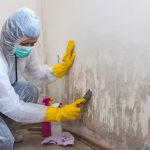Most people tend to ignore symptoms of a tumor developing for a long time. They misconceive unusual weight loss, fever, cough as minor ailments. However, they are red alert signs of a deadly disease slowly and gradually poisoning the body. Let’s see about the risks of mesothelioma after asbestos exposure.
Mesothelioma is fatal cancer misdiagnosed often, with common signs and symptoms that an individual should consider before the time are shortness of breath, trouble swallowing, pain in the chest and back, swelling of the face, etc. So if you develop any of such symptoms, it is wise to consult a physician immediately.
Mesothelioma is an incurable and rarely occurring cancer. So the more you know about it and educate yourself, the prognosis gets better. However, there are certain risks factors associated with it. A risk factor is anything that can increase the chance of getting a disease. Hence the most critical risk factor associated with mesothelioma is asbestos exposure.
Suppose you or any of your loved ones work in an industry where asbestos exposure could be possible; the chances of developing mesothelioma increases two-fold. Hence, it is essential to recognize the risk factor on time. It helps the victims and the doctors diagnose and treat mesothelioma at an earlier stage. But one should know how strong the association between asbestos exposure and developing mesothelioma is. So continue reading to gain a better understanding of the disease:
Understanding the degrees of asbestos exposure and the risk associated
Asbestos exposure is undoubtedly one of the proven leading causes of mesothelioma. The tiny fibers of asbestos make their way through the nose into the lining of the lungs. There they get embedded and irritate the pleura. They cause gene mutation, which results in tumor development. But the question arises can one-time asbestos exposure cause mesothelioma? The answer is; no amount of asbestos exposure is safe, but certain factors may influence the risk level.
Some of the factors are concentration, degree, frequency, and type of asbestos fibers. Hence, for your better understanding, we have covered different aspects of degrees of asbestos exposure:
- One-time asbestos exposure:
One-time exposure generally does not pose much risk to the health. According to the research, asbestos-related diseases take months and years to develop. However, if you inhaled asbestos at your workplace, it depends upon how much dust did you inhale?
Was the asbestos-containing product damaged? Or was it crumbled, smashed, or scraped? And is your workplace poorly ventilated? If your answer to the questions is yes, then there are high chances that you have inhaled it. But there is no need to panic. Asbestos takes years to develop any symptoms. Till then you should, consult your physician regularly and monitor yourself closely for any possible signs.
- Occupational asbestos exposure:
Some occupations put an individual at the highest risk of developing mesothelioma with minimal exposure. There was a time when most of the construction material contained asbestos. At the same time, the construction workers and painters were exposed to asbestos daily.
Firefighters also inhale a lot amount of asbestos released in the air while saving lives. However, asbestos is the best mineral for insulation. Also, military personnel and civilians who build ships at shipyards are easily exposed. Occupational asbestos exposure is the primary source that is more dangerous than secondary exposure.
- Asbestos exposure at home:
Asbestos is the best insulation material easily found in the roof, walls, and different machinery used at home. If the asbestos-containing objects are not damaged, they are not severely harmful.
There’s a chance of risk for inhaling the loosened fibers if you drill the walls, or they naturally wear and tear. Individuals residing in old constructions should never try to remove or handle asbestos-containing objects on their own and always call a trained professional for its safe removal.
- Environmental asbestos exposure:
Asbestos is a naturally occurring mineral found in abundance in the earth’s crust. People who live in mountainous regions or hills are more exposed to it through the natural release from the ground.
The mineral can also get mixed in the water streams. It can contaminate the drinking and domestic water supply of the residential area. While the water from asbestos-containing streams evaporates, it can travel miles as an airborne fiber and pollute the residential area. People who live near mines also inhale asbestos released due to the drilling of the earth’s crust.
- Secondhand asbestos exposure:
Secondary asbestos exposure occurs when a construction worker or a firefighter brings home the fibers unintentionally. It is more common among women and children. Just like primary exposure, it takes decades to develop and is equally dangerous. However, with time the secondary exposure has reduced to almost minimal. Workers are now allowed to change their contaminated clothes before they leave for home. They also provide them the facility of the shower to wash the fibers off their skin and hair. Such employers should use proper laundry techniques to wash their clothes. Hence, one should take all necessary precautions to save oneself and family members from the deadly contamination.
A take-home message:
The only way to prevent mesothelioma is by educating the masses. Know the products that can have asbestos fibers. If you are not sure about the old building materials, get them tested. Never try to remove asbestos-containing material without the help of a professional. Always rely on professionals for their safe removal or encapsulation. However, occupational asbestos exposure is still a hazard worldwide. It is advisable to follow safety precautions. If you or any family member has a history of asbestos exposure, don’t wait for the symptoms to appear. Be proactive and talk to your doctor. Early detection leads to the best treatment of mesothelioma.











